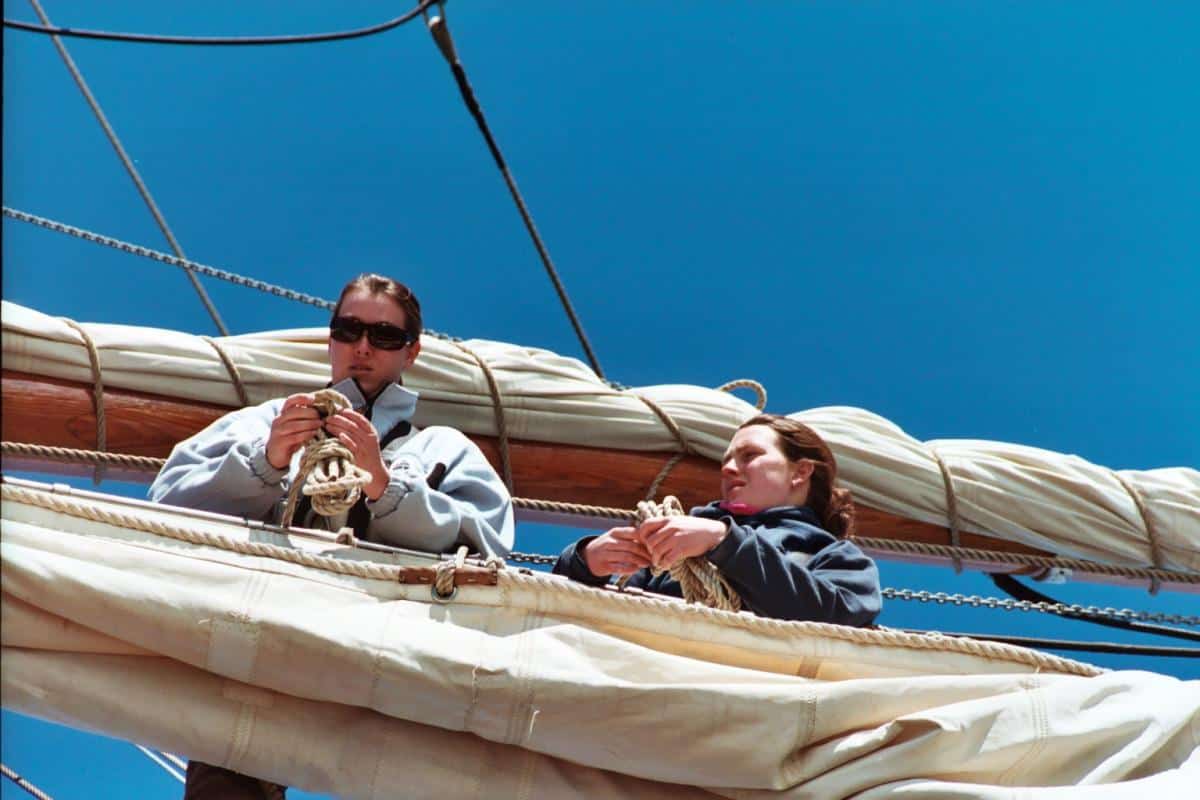We only Sail around Antarctica in the Summer
A view on the climate and weather in Antarctica by Classic Sailing co-founder Debbie Purser
Antarctica is the coldest, driest, windiest continent in the world, but like all statistics, they are generally made up by men with beards trying to impress you with their intrepid expeditions. When you see extreme temperatures quoted, they generally refer to the middle of the continent, at high altitude in winter.
Bark Europa explores Antarctica in summer when day time temperatures can be crisp, dry and sunny like a high altitude ski resort or warmer. We even sometimes serve and eat lunch on deck. Temperatures tend to be about -5 degrees to +5 degrees which can be jumpers or shirt sleeves on a calm day, but if you chuck in a blizzard and high winds and sea spray then it can get pretty epic. The Cape to Cape Voyage is at the end of the summer but you are heading towards South Georgia which is a different climatic zone. By the time you get to Tristan da Cuhna you might be in sandals.
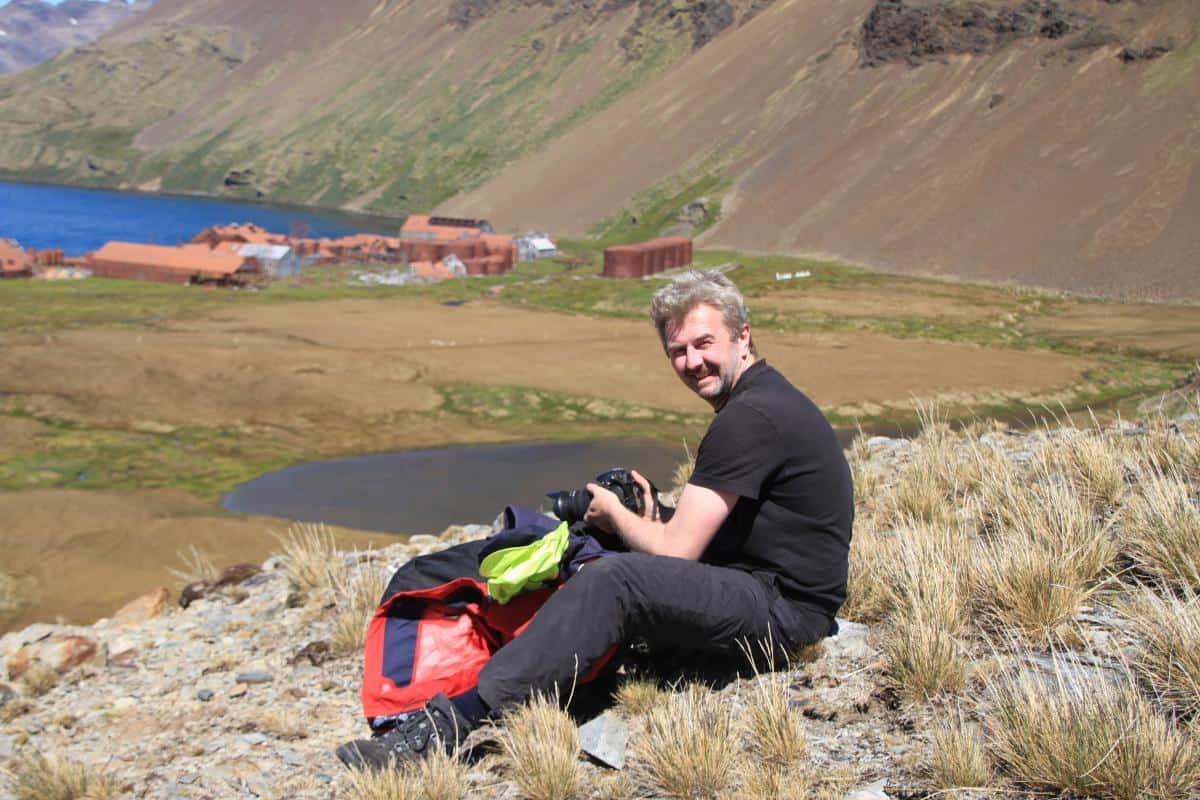
Speaking as a woman who has been there 3 times on Europa, I am completely in the love with the place and its many different climates in one day. I have worked with deckhands on the ship who do three month stints in Antarctica, often working outdoors on deck for 6 hour watches I can say that it is not often as cold as the hype. As guest crews you can wander in our of life in the freezer, and do some hearty rope pulling if you want to get warm.
When the balmy weather changes and you see a glimpse of the other side of its nature, you can really relate to the polar explorers of the early 20th Century and understand the fear of this unforgiving environment.
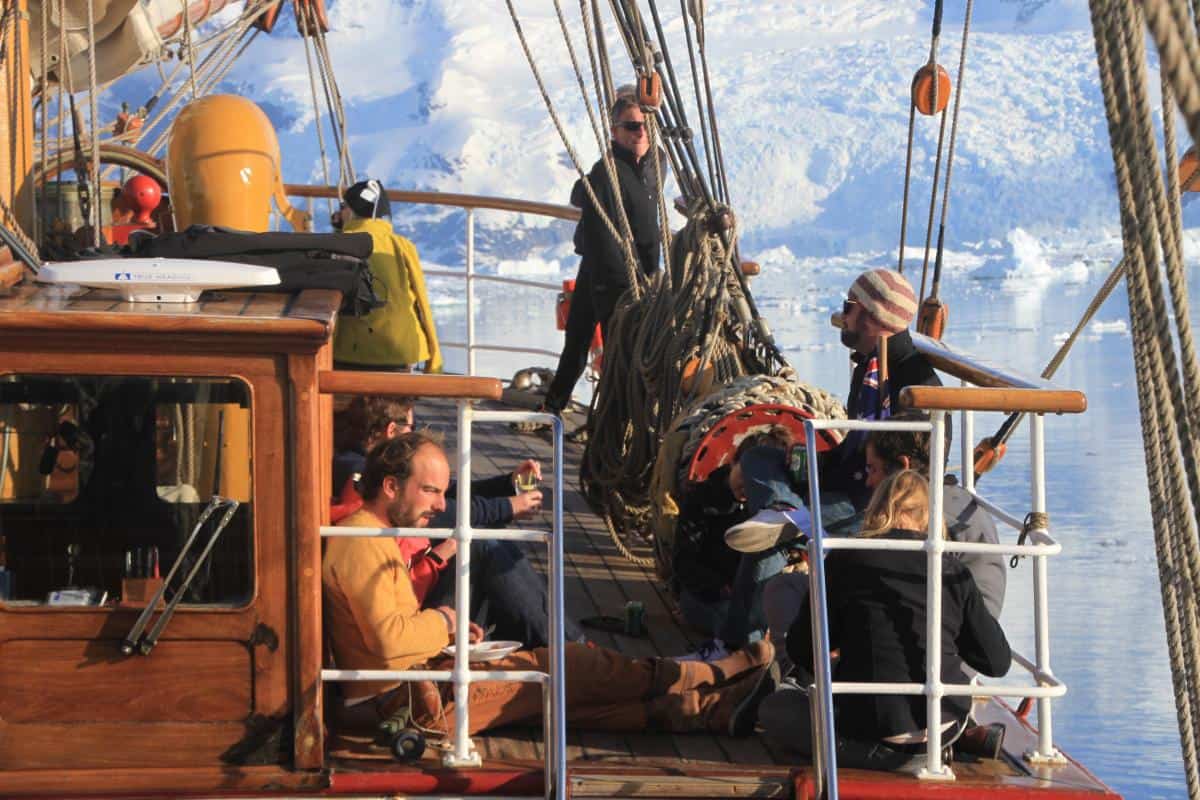
Plenty of Places to Sail
Antarctica is much more of a sailors destination than parts of the Arctic because the prevailling winds whistle around the Southern Ocean in a series of depressions. You can run from them but you cant hide all the time. The Captain will always be looking for a gap in the storms to cross the Drakes Pass but as it takes 3-4 days you will probably catch some strong winds and big swell at some point on the trip there or back. Europa is well set up for sailing in strong winds and 40 knots plus is pretty normal to the crew.
Between the South Shetland is a wide stretch of water known as Bransfield Strait which has great sailing and quite a few icebergs to miss. There are also some wide sounds and fjords where sailing can be a gentle glide in flat seas or a fast blast in katabatic winds and a small chop.
In the tighter fjords or where sea ice is getting a bit tricky, the ship might have to motor. The crew are always vigilant to wind shifts bringing ice into anchorages, and you might have to leave some spots in a hurry.
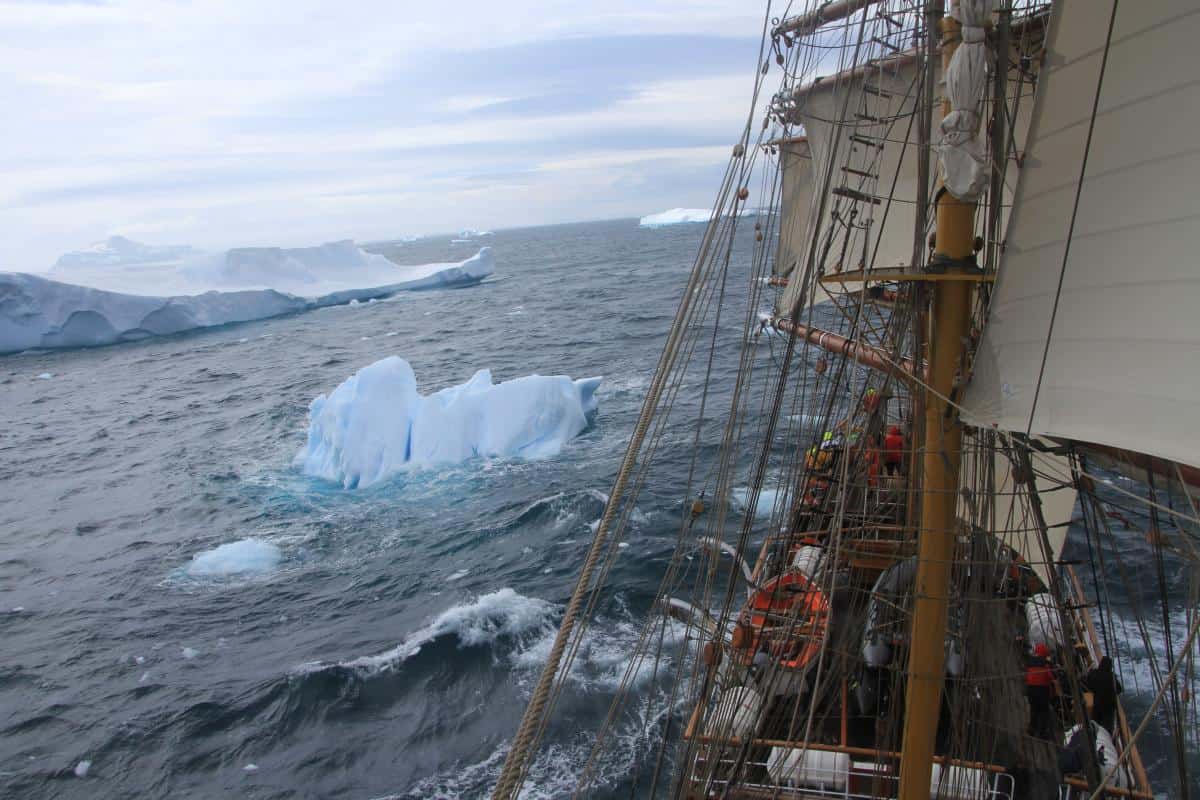
Dry and Sunny versus Fog and Blizzards
The Drakes Passage can have rain, fog and blizzards and the Antarctic Convergence zone where near freezing Antarctic currents meet the warmer Atlantic always causes fog for a day or so. Beyond it the weather is generally crisp and dry and often sunny.
Lookout duty is constantly reviewed and if 30 minutes is too long then people are changed every 20 mins. The ships wheelhouse has a few pairs of snow googles for the helm or lookouts if it gets really bad.
In extreme weather with big seas the ship can be steered with auto helm controls from inside the wheelhouse, but this doesn’t happen often.
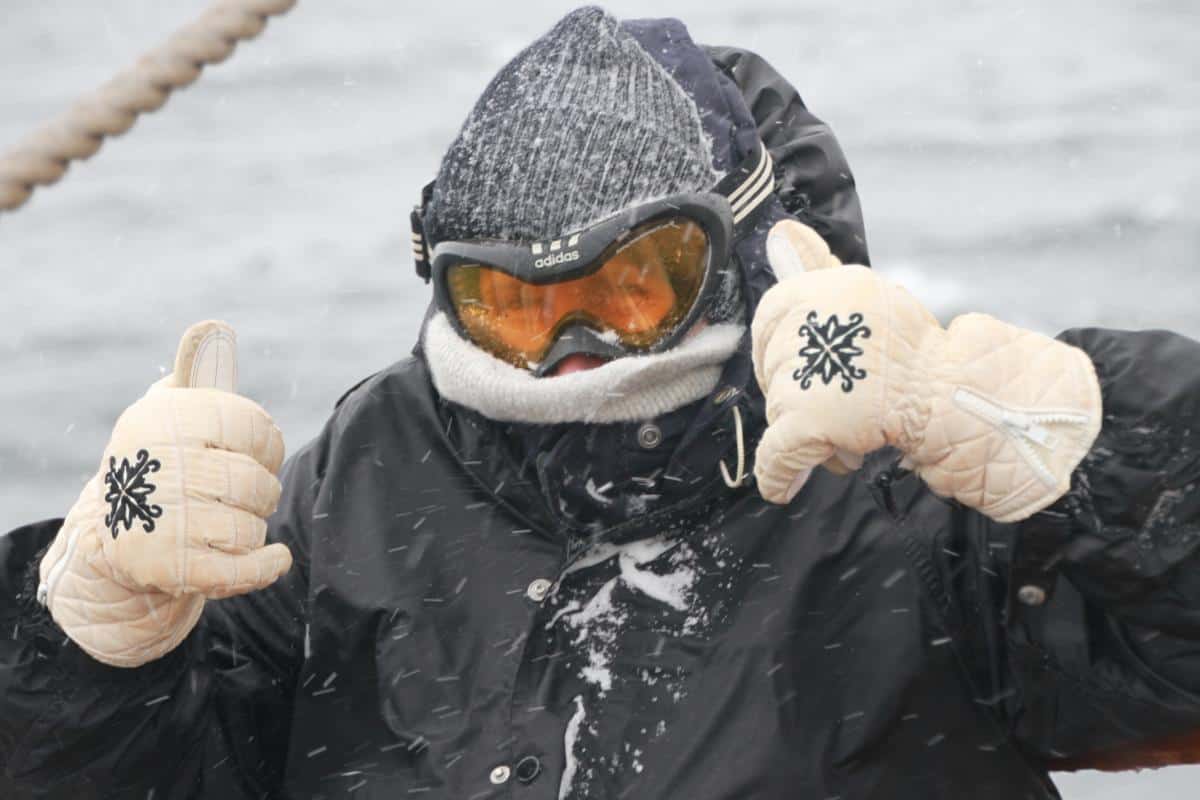
Is it too Cold to Climb the rigging ?
It is a bit intimidating to climb the rigging in the Drakes passage at the beginning of the voyage due to the rough seas, but the temperature thing is more of a confidence issue. People are scared their hands will be so cold they might let go. Physically climbing generates quite a bit of heat and a bit of adrenalin gets the blood pumping so you are rarely cold climbing or furling sails. It you get sweaty and then hang around in one place in the rigging you will get chilled. You can wear gloves if they fit well. Personally I climb with bare hands but have gloves in pocket or tucked in jacket, in case I have to hang around. The ships professional crew generally are happy to work aloft in any conditions as it is more fun than cleaning cabins !
